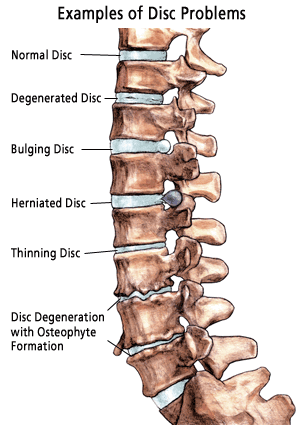
Patients are often discouraged by the findings of an MRI, and we often hear patients say something along the lines of “The MRI showed I have a herniated disc and the only way to fix it is surgery, but my doctor wanted me to try Physical Therapy first” or “my insurance company will not cover the surgery unless I do Physical Therapy first”. As Physical Therapists we actually love to hear this because that means we have the opportunity to change the way this person thinks about their condition and about Physical Therapy. There is nothing more satisfying than seeing that same person walk out the door pain free and fully functional without the need to have surgery.
Diagnostic imaging such as MRI’s, CT-Scans, and X-rays can be extremely useful in identifying anatomical abnormalities. They can show us broken bones, torn ligaments and tendons, herniated discs, degenerative joint disease, arthritis, spinal stenosis, spondylolysis, spondylolisthesis, and a host of other conditions. But, do these imaging studies tell us the cause of your pain or what treatment you will respond best to? The answer may surprise you……
In order to answer that question, let’s look at the MRIs, X-Rays and CT-Scans of people who do NOT have low back pain and see what we find. Fortunately, there are several academic journal articles that have answered this question for us. (1,2,3)

These researchers took MRIs, CT-Scans and X-rays of people who are not in pain and found that “degenerative joint disease, disk bulging, disk protrusion, disk herniation, foraminal stenosis are common MRI findings in people WITHOUT back problems”. Additionally, as we age the percentage of people with these conditions increases.
This might not sound like good news, but it is! This means that a lot of people have herniated discs, bulging discs, degenerative disc disease and a host of other conditions without having pain or dysfunction. The body has an amazing ability to compensate for deficits.
So, do imaging studies tell us the cause of pain? Well, an imaging study, on its own, will not necessarily tell us the cause of pain. Will an MRI tell us if we need surgery? Well, again, not always. Sometimes people will present with a pattern of pain or disability and display signs and symptoms that are consistent with anatomical findings on MRIs, CT-Scans or X-rays, and sometimes they don’t. This is where a thorough physical exam comes into play.
In Physical Therapy, we cannot “un-herniate” or “un-bulge” a disc, we cannot reverse osteoarthritis or foraminal stenosis. But what Physical Therapists are expert at is improving function and reducing pain. We have a specialized skill set that allows us to help you improve your mobility, strength, endurance, and function while reducing disability and pain through a patient centered approach, and we are very good at it.
Diagnostic imaging can be extremely valuable, but don’t let the results alone discourage you, or make you feel like there is nothing you can do. Be an active participant in your recovery. With very few exceptions, you can improve your strength, mobility, endurance, and functional tolerance while reducing disability and pain.
Sources:
- Boden S. et. al, Journal of Bone Joint Surgery Am. 1990 March;72(3):403-408
- Boden S. et. al, Journal of Bone Joint Surgery Am. 1990 September;72(8):1178-1184
- Jensen M. et. al, New England Journal of Medicine. 1994 July 14;331)2):69-73
Categorized as: Articles